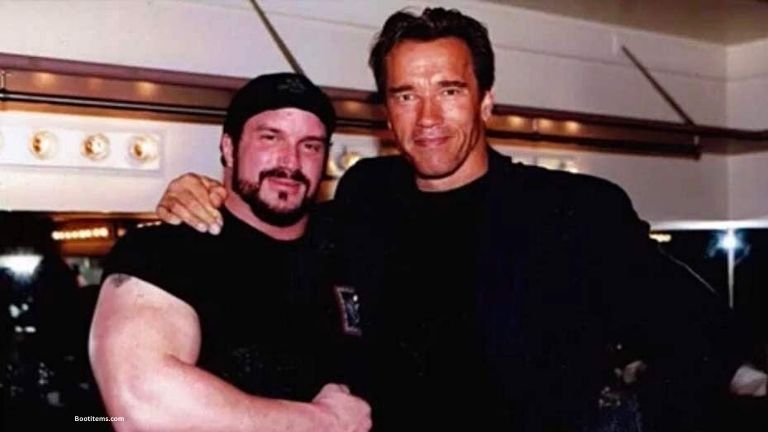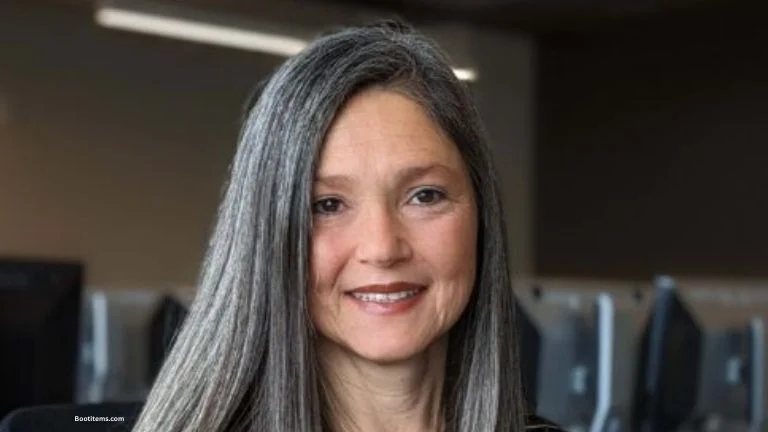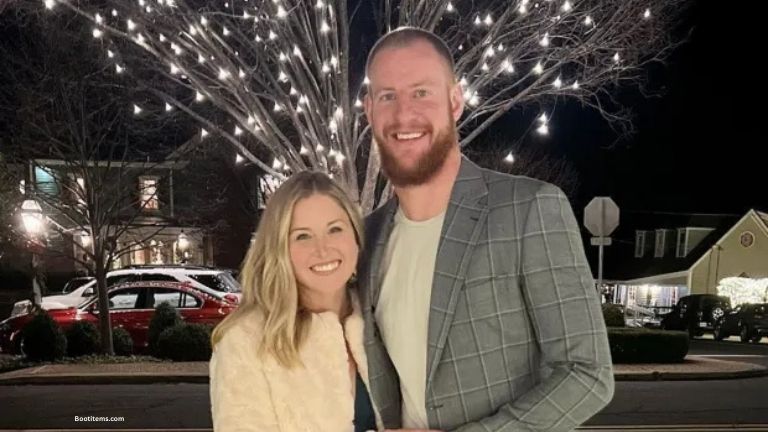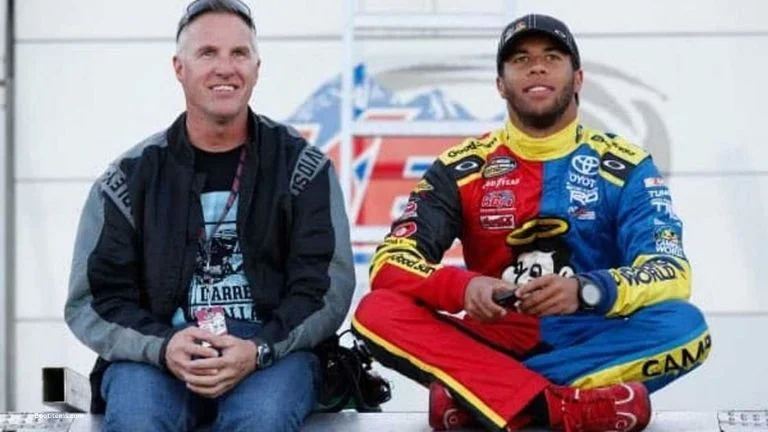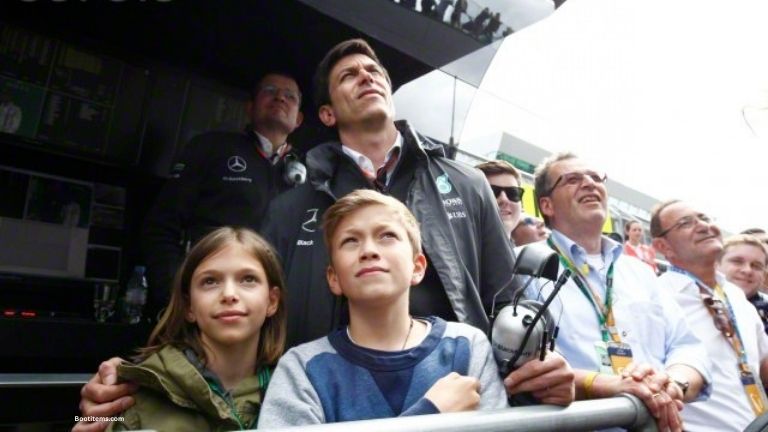Jim Dotson WWE: The Iconic Security Director’s Story
Jim Dotson was WWE’s Director of Security from 1995-2001, becoming an iconic figure during the Attitude Era despite never being a wrestler. He passed away in 2015 at age 49.
Jim Dotson: WWE’s Legendary Head of Security
Jim Dotson may not have been a WWE superstar in the traditional sense, but his presence during the Attitude Era was unmistakable. Standing at over 6 feet tall and weighing 260 pounds of pure muscle, Dotson became one of the most recognizable non-wrestling personalities in WWE history.
His journey from college football player to the company’s Director of Security is a fascinating tale that intertwines with some of wrestling’s biggest names and most memorable moments.
Early Life and Background
Born James Mitchell Dotson on March 5, 1966, in Nashville, Tennessee, Jim developed an interest in professional wrestling while playing collegiate football at the University of Middle Tennessee. Though he was a wrestling fan, his career path initially took him in a different direction.
After college, Dotson entered the world of bodybuilding, where he achieved significant success by winning the prestigious Mr. Tennessee title.
His entry into security work came somewhat by chance. After helping a friend provide security at a Hank Williams Jr. concert, Dotson found his calling in protective services. This experience led him to establish his own security firm in Nashville after graduating college. This decision would ultimately set him on a path that would make him a familiar face to millions of wrestling fans worldwide.
During this period in Nashville, Dotson formed a friendship that would later change the course of his career. He met a young wrestler named Mark Calaway, who was working in the Tennessee territory at the time. Wrestling fans would later come to know Calaway as The Undertaker. The two maintained their friendship even after Calaway signed with the WWF (now WWE) in 1990.
Joining the WWE
By the mid-1990s, WWE was experiencing significant growth, and with that came the need for enhanced security measures. When Vince McMahon was looking to beef up the company’s security team, The Undertaker recommended his friend from Nashville. Dotson joined WWE in 1995 as part of their security team.
Dotson’s imposing physical presence and professional demeanor quickly made him an asset to the company. Within just one year, he rose through the ranks to become the Director of Security for the entire WWF, overseeing protection for the company’s events and talent.
His trademark appearance became instantly recognizable to fans. Dotson was never seen without his signature leather newsboy hat (always worn backwards) with his ponytail hanging out the back, complemented by a 1990s-style goatee. This distinctive look, combined with his muscular physique, made him impossible to miss whenever he appeared on screen.
Rise to Prominence During the Attitude Era
The Attitude Era, spanning roughly from 1997 to 2002, was characterized by edgier content, more adult-oriented storylines, and increasingly rowdy crowds. As the head of protective services, Dotson became a crucial figure during this volatile period. He was frequently visible on camera, particularly during segments that involved crowd interaction or when wrestlers ventured into the audience.
Whenever there was a major angle or storyline development that required security presence, Dotson was there, managing the crowd and ensuring the safety of performers. His consistent presence during these high-profile moments made him increasingly familiar to viewers. Despite never being formally introduced or acknowledged on television, regular viewers came to recognize him as a fixture of WWE programming.
Vince McMahon, always with an eye for marketable personalities, began to see potential in Dotson beyond his security role. As Dotson’s visibility increased, so did his recognition among fans. People began approaching him for autographs almost as frequently as they did the wrestlers themselves. This growing popularity didn’t go unnoticed by WWE management.
Almost Becoming a Wrestler
Seeing the positive fan reaction to Dotson, Vince McMahon attempted multiple times to convince him to transition from security to becoming an in-ring performer. Given Dotson’s impressive physique and natural charisma, McMahon believed he could be successful as a wrestler.
However, Dotson consistently declined these offers. Despite his friendship with wrestlers and his appreciation for the business, he was content with his role behind the scenes. He preferred focusing on protecting the talent rather than becoming one of them. His primary concern was always the safety of the performers and their families.
Nevertheless, McMahon found ways to capitalize on Dotson’s growing popularity. WWE cameras began to feature him more prominently, often ensuring he was visible in the background during key segments. This increased exposure further cemented his status as an unofficial character in the WWE universe.
The Steve Blackman Angle
While Dotson resisted a full transition to becoming a wrestler, he did participate in a minor storyline with WWE superstar Steve Blackman around 2000. The angle featured segments showing growing tension between Blackman and Dotson, with their interactions becoming increasingly physical.
This feud was teased on WWE programming, with the company seemingly building toward a potential match or further storyline development. However, the angle was never fully realized or concluded on screen. This brief foray into storyline involvement would be as close as Dotson came to becoming an actual WWE performer.
Despite his limited role in this angle, it demonstrated WWE’s recognition of Dotson’s value as an on-screen personality. Even without speaking lines or competing in matches, he had developed enough of a connection with the audience that the company believed fans would be invested in a storyline involving him.
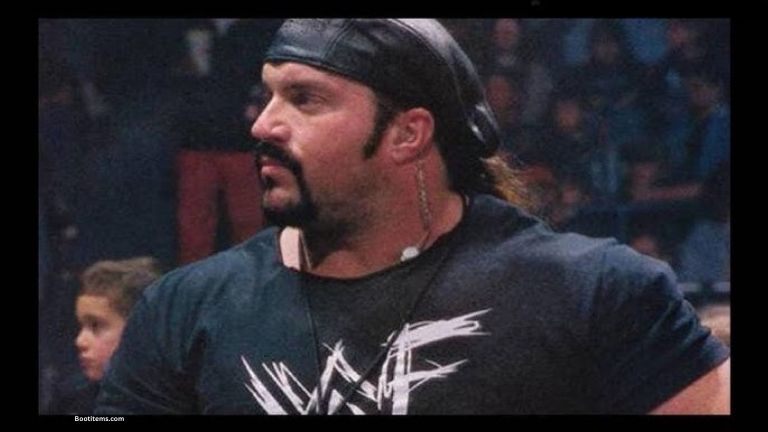
Health Challenges and Departure
By 2001, attentive viewers began to notice that Dotson was appearing less frequently on WWE programming. Behind the scenes, he was battling severe health issues that would ultimately force him to step away from his position. Dotson had begun suffering from debilitating migraine headaches that significantly impacted his ability to perform his duties.
As his condition worsened and no effective treatment was found, Dotson made the difficult decision to resign from his position as WWE’s Director of Security in 2001. His departure marked the end of an era for WWE’s security team and removed a familiar face that fans had grown accustomed to seeing during the company’s most explosive period.
Unfortunately, Dotson’s health challenges continued after leaving WWE. His migraine condition eventually caused him to be classified as legally blind. While he could still see at close range, his vision was severely impaired, further limiting his professional options.
Life After WWE
After departing from WWE, Dotson maintained a low profile. He returned to his hometown of Nashville, Tennessee, where he lived quietly away from the spotlight he had inadvertently found during his WWE tenure. Information about his professional activities after WWE is scarce, likely due to the limitations imposed by his health conditions.
Despite his physical challenges, Dotson remained active in his community. According to information shared by his family after his passing, he spent time volunteering to help people with disabilities and others in need. This charitable work reflected the same protective instinct that had defined his professional career.
His health issues continued to present challenges. In addition to his vision impairment, Dotson dealt with other medical conditions that prevented him from working in his later years. Without health or life insurance, these circumstances created financial hardship for him and his family.
Legacy and Impact
Though he never sought the spotlight, Jim Dotson left an indelible mark on WWE history. For fans of the Attitude Era, his presence is inextricably linked to some of the most memorable moments in wrestling. His consistency in the background of so many iconic scenes made him a familiar and comforting presence for regular viewers.
His impact on WWE was acknowledged in a subtle but meaningful way years after his departure. When WWE created the security team known as J&J Security (Jamie Noble and Joey Mercury) to accompany Seth Rollins in 2015, their Twitter bio stated that they were “trained at the Jim Dotson school of security.” This reference was a respectful nod to Dotson’s legacy and his contributions to the company.
Beyond his on-screen presence, Dotson earned the respect and friendship of many WWE performers. His primary concern was always their safety, and he approached this responsibility with professionalism and dedication. The relationships he built during his tenure speak to his character and the seriousness with which he approached his role.
Passing and Tributes
Jim Dotson passed away on December 10, 2015, at the age of 49 in his hometown of Nashville, Tennessee. His family established a GoFundMe page to help with funeral expenses, revealing that Dotson had spent years dealing with serious health issues including the incurable eye disease that had affected his vision. They also shared that he had been caring for his elderly mother in his final years.
Following the announcement of his passing, tributes poured in from wrestlers and fans who remembered his contributions to WWE during one of its most successful periods. Many wrestlers who had been protected by Dotson during their careers expressed their condolences and shared memories of working with him.
For many fans, Dotson’s passing represented the loss of another connection to the beloved Attitude Era. Though he wasn’t a wrestler, his consistent presence during that period made him part of the tapestry of memories that fans cherish from that time.
Jim Dotson’s Relationship with The Undertaker
One of the most significant relationships in Dotson’s professional life was his friendship with The Undertaker. Their connection predated both men’s time in WWE, having met when Mark Calaway was working in the Tennessee wrestling territory early in his career.
Early Friendship
The friendship between Dotson and Calaway began in Nashville, where both men were building their respective careers. While Dotson was establishing his security company, Calaway was working to make a name for himself in professional wrestling. Despite their different career paths, they formed a bond that would last for years.
When Calaway signed with WWE in 1990 and began his transformation into The Undertaker, he and Dotson maintained their friendship. This continued connection would eventually lead to Dotson’s opportunity with WWE when the company was looking to enhance its security team in the mid-1990s.
The Recommendation
By 1995, The Undertaker had become one of WWE’s biggest stars. When Vince McMahon expressed the need for improved security as the company continued to grow, The Undertaker recommended his friend from Nashville. This endorsement from one of the company’s most respected performers gave Dotson an immediate credibility within the organization.
The Undertaker’s recommendation proved to be well-founded, as Dotson quickly demonstrated his value to the company. His rapid promotion to Director of Security within a year of joining WWE validated The Undertaker’s faith in his abilities.
Professional Relationship
During their time working together in WWE, Dotson and The Undertaker maintained both a professional and personal relationship. As head of security, Dotson was responsible for protecting all WWE talent, including his friend. This dynamic added an interesting layer to their friendship, with Dotson now serving in a protective capacity for the man who had helped bring him into the company.
The Undertaker, known for his professionalism and respect for the business, likely appreciated having someone he trusted in charge of security during the often chaotic Attitude Era. For Dotson, having an established ally in the locker room probably helped ease his transition into the WWE environment.
The Visual Impact of Jim Dotson
One of the most remarkable aspects of Jim Dotson’s WWE legacy is how memorable he became despite never being officially introduced or acknowledged as a character. His visual presence alone was enough to make him recognizable to millions of fans.
The Distinctive Look
Dotson’s appearance was instantly recognizable. Standing over 6 feet tall with 260 pounds of muscle, he had a naturally imposing presence that made him perfect for his security role. His signature style included a leather newsboy cap worn backwards, a ponytail, and a well-groomed goatee. This consistent look made him easy to spot whenever he appeared on camera.
In an era filled with colorful characters and larger-than-life personalities, Dotson’s more subdued but distinctive appearance provided a visual contrast. While the wrestlers were often dressed in elaborate costumes and engaging in theatrical performances, Dotson’s consistent, professional appearance represented a touch of reality amidst the spectacle.
Camera Presence
As WWE recognized Dotson’s growing popularity with fans, they began to ensure he was captured on camera more frequently. Whenever the action spilled into the crowd or a major angle was taking place near the barricade, Dotson could often be seen in the background, vigilantly monitoring the situation.
This increased visibility was a deliberate choice by WWE production. Since Dotson had declined opportunities to become an actual performer, featuring him prominently in the background was the next best way to capitalize on his recognition with fans. Over time, spotting Dotson became something of a game for regular viewers, similar to finding a familiar extra in a favorite film.
Fan Recognition
Despite never being promoted as a character or given any storyline focus (with the exception of the brief Steve Blackman angle), Dotson achieved a level of fan recognition that rivaled some actual performers. Fans would approach him for autographs at events, demonstrating that his consistent presence had made an impact on the audience.
This organic popularity was unusual for someone in a behind-the-scenes role and speaks to both the unique nature of professional wrestling as entertainment and Dotson’s natural charisma. Without speaking a word on television, he had become a character in the minds of fans simply through his visual presence.
The Cultural Impact of Jim Dotson
While Jim Dotson’s role was officially that of security director, his cultural impact on WWE and its fans extended beyond his job description. He became a symbol of the Attitude Era and an unofficial character in the WWE universe.
Symbol of the Attitude Era
For many fans, Dotson is as much a part of their memories of the Attitude Era as the wrestlers themselves. His consistent presence during one of WWE’s most popular and influential periods links him inextricably to that time in wrestling history. When fans revisit Attitude Era footage, spotting Dotson in the background often triggers nostalgia for that period.
The Attitude Era was characterized by pushing boundaries and breaking the fourth wall in ways that previous eras of wrestling had not. The increased visibility of behind-the-scenes personnel like Dotson was part of this more realistic approach to presentation, blurring the lines between the show and reality.
Legacy in WWE Security
Dotson set a standard for WWE’s security team that influenced how the role was perceived both within the company and by fans. His professionalism and dedication to protecting the performers established expectations for those who would follow in his footsteps.
Years after his departure, WWE acknowledged his impact when they created J&J Security (Jamie Noble and Joey Mercury) as on-screen characters. Their Twitter biography stated that they were “trained at the Jim Dotson school of security,” a clear tribute to his legacy.
This reference demonstrated that even within WWE, Dotson’s contribution to the company was remembered and respected. It also showed that his impact had transcended his actual tenure with the company to become part of WWE lore.
Remembered by Fans
Perhaps the most significant aspect of Dotson’s cultural impact is how he has remained in the memories of fans long after his time with WWE ended. Online wrestling communities still discuss him, share images of his appearances, and include him in conversations about the Attitude Era.
For a non-wrestler to achieve this level of lasting recognition is unusual and speaks to the unique connection Dotson established with the audience. Without promos, matches, or storylines, he nevertheless became part of the fabric of WWE for fans who watched during his tenure.

Samantha Yates is a creative writer and journalist with expertise in content creation and editing. She holds an MA in Creative Writing and brings professional experience from Lionbridge, where she developed engaging content for leading technology companies

